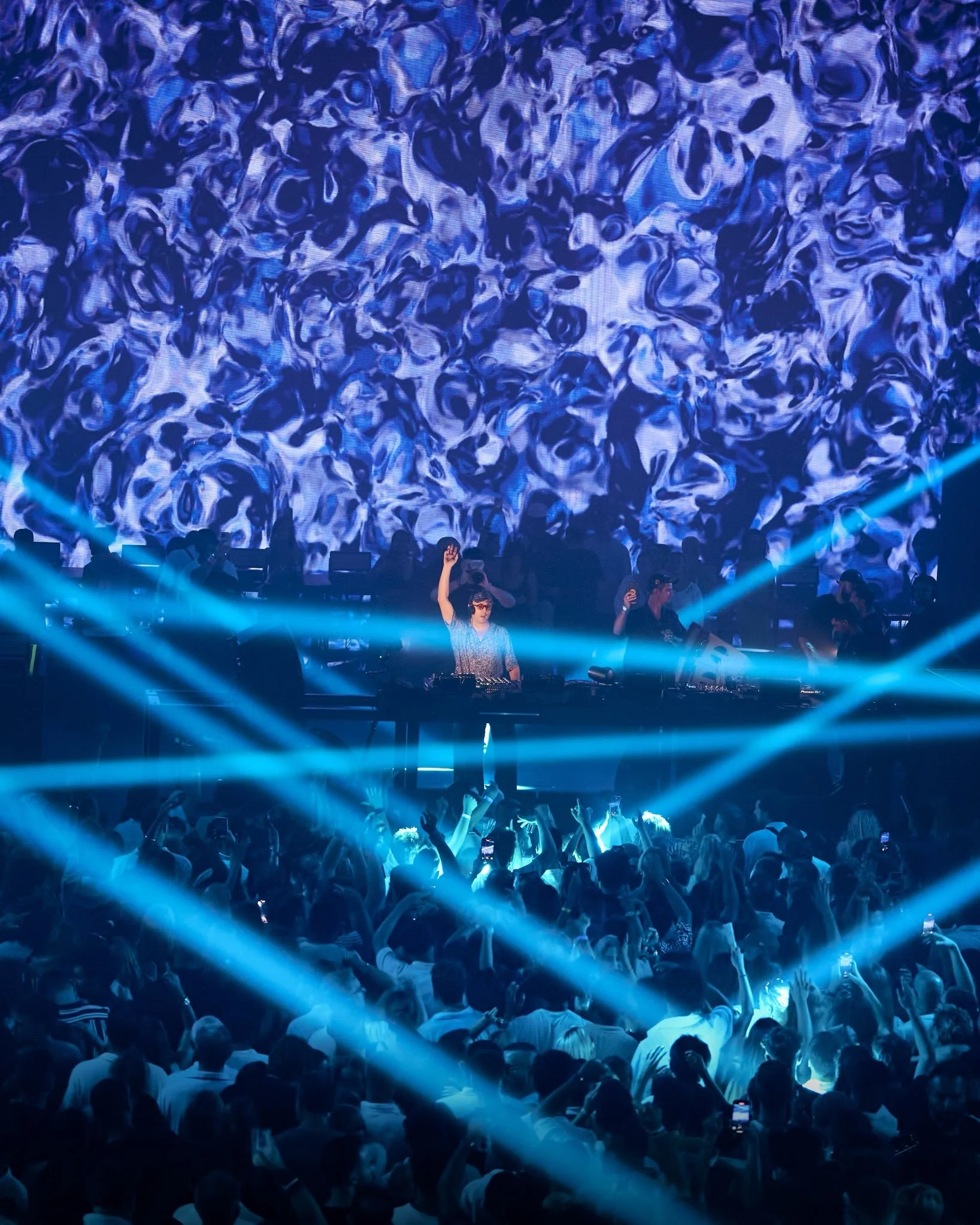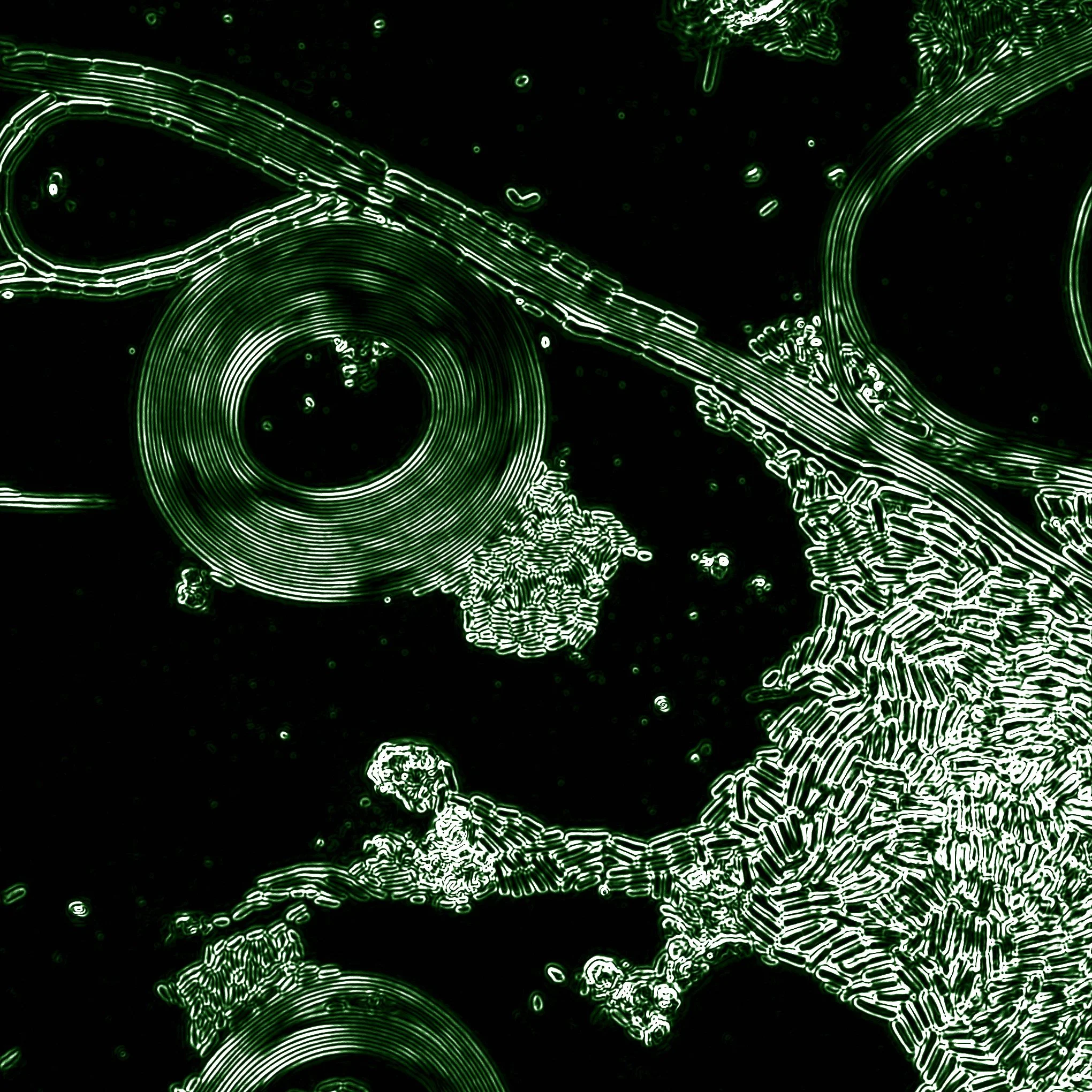Bridging Worlds: A Conversation with Agoria
Few artists embody the spirit of creative evolution quite like Agoria. From the underground rave scenes of the 1990s to the prestigious halls of the Musée d'Orsay, Sebastien Devaud—known to the world as Agoria—has consistently positioned himself at the frontier of emerging artistic territories. A pioneering DJ and producer who helped shape electronic music culture, Agoria made a bold leap into the NFT space in 2021.
Working at the intersection of art, science, and technology, Agoria has coined the term "biological generative art," collaborating with scientists to capture microscopic life and transform it into digital art. His installations blur boundaries between physical and virtual experiences—from "Sigma Lumina," where visitors minted NFTs through collective breathwork, to his innovative approach of sharing music royalties with collectors through the Agorians community. In this conversation, we explore how his decades in electronic music prepared him for Web3, the role of scientific collaboration in his practice, and his vision for sustainable creative economies.
Kika Nicolela : You’ve been a successful international DJ and producer since the 90s, releasing albums with Universal Music and Virgin, founding Sapiens Records, and helping create Nuits Sonores festival. You only entered the NFT space in 2021. How did your decades in electronic music prepare you for this leap into digital art, and what drove this artistic evolution?
Agoria : When I started DJing in the 90s, everybody was laughing at me. Very few understood what we were doing. Rave culture was about stepping into the unknown — you had no idea where you were going, and that was the beauty. The collective energy of participants carried you forward. Today everyone wants to be a DJ, but at the time we were misunderstood pioneers. I feel exactly the same with NFTs and Web3. Mass adoption may come one day, but there’s no rush. This ecosystem is still very young — and that’s its strength.
KN : You’ve coined the term “biological generative art” and work with scientists like biologist Alice Meunier to capture microscopic life. Several of your past projects have been done in collaboration with different types of scientists and biologists. How do these scientific partnerships inform your artistic practice and evolution? And how generative art, AI and blockchain technology can impact scientific research?
A : In every scientist, there is an artist. I love spending hours with them, debating everything and nothing — sometimes starting from a profane question like, “is DNA really what we think it is?” and ending with beers after hours. Scientific research is part of my process, giving me hints of meaning that direct my art. Blockchain can help fund projects and reveal studies, sketches, directions, ideas. The danger is to think that minting scientific research authenticates its results. It doesn’t — it only authenticates the process, the works, not their inherent truth. One day we might look back and realize that a given axiom or project was scientifically proven, but only retroactively.
KN : Your “Sigma Lumina” installation created QR code shadows that allowed visitors to mint NFTs through collective breathwork. How do you reflect on the impact of this experience? Is it one of your goals, bridging traditional museum audiences with Web3 culture?
A : Our main goal with Johan Lescure was to make visitors experience Web3 without ever speaking about Web3 — making them adopt technology without being technical. What could be more universal than breath? What could be more unifying than linking all breaths into one piece, one film — actually seven films, minted 1/1 on objkt. The administration of the Musée d’Orsay reminded me that I was the very first crypto-native artist to exhibit in a top 5 world museum, which they said would be historical when analyzed by traditional art curators. Personally, I don’t write history and I remain skeptical about these kinds of headlines — but what I know for sure is that those 1/1 works on objkt hold a very special place in my heart.
KN : You’ve built the “Agorians” community and pioneered sharing song royalties with your NFT collectors. Beyond creating, you’re also an active collector yourself on objkt, supporting other artists in the ecosystem. What role do you think this reciprocal relationship - being both creator and collector - plays in building a sustainable NFT art community? How important is genuine community engagement for artists working in the Web3 space?
A : Art ecosystems thrive on reciprocity. By collecting, I don’t just support others financially — I learn, I stay humble, I contribute to a living dialogue. The Agorians community was born from this spirit of sharing: when I split royalties with them, it was a way of saying, “we rise together.” In Web3, community is not a buzzword; it’s the very structure of sustainability. Without genuine engagement, it collapses. With it, we invent new economies of care.
Caillebotte was a patron and curator of Impressionism before becoming an incredible painter himself. I see a parallel in our space: reciprocity enriches everyone. At the same time, I totally understand that not every artist wants or can collect — some should simply focus on their own art. We are all different. If some are more wealthy and want to help develop the scene, great. But there are no obligations. Community only works if it’s genuine, not forced. We can all rise together in different ways.
KN : Your “Getaway” generative music NFT was a major success. Do you see NFT technology offering a genuine alternative to traditional music streaming - which many emerging artists find exploitative? How do you envision the future of music distribution in Web3?
A : I’ve always said: I don’t believe in single-track music NFTs. Paying for one song as an NFT will never compete with streaming — for ten euros you can access everything in one click. NFTs will remain marginal for unknown artists, unfortunately. Some exceptions will exist here and there, but it costs too much to promote and do marketing. But projects like Getaway are different. They’re about making music rare again, the opposite of what people often claim about music NFTs. It’s not about mass adoption; it’s about building unique concepts and formats that make music feel like art again. In a world where most tracks are forgotten in seconds, NFTs can restore attachment and uniqueness.
KN : You maintain a separate profile as “Capricorne” on objkt, with your “Palette Study” collection. What motivated you to create this parallel artistic project, and how does it differ from your main Agoria work?
A : Capricorne began as a gesture of gratitude, a way to thank my core collectors by giving them access to pieces at a more accessible level. After my exhibition at the Musée d’Orsay, the value of my main 1/1 works under Agoria grew significantly, and I wanted to create a parallel space where collectors could still engage closely with my art. Over time, these Capricorne works — because they are extremely limited — have gained their own strength and recognition. What began as a gesture of accessibility has evolved into a collection with its own aura and identity.
KN : Can you share your thoughts and motivations behind “The Swimming Pool” series?
A : For once, The Swimming Pool series wasn’t a nerdy project (laughs). I simply wanted to create something linked to my favorite places to play as a DJ. It was a way to bridge my two main disciplines — music and visual art — through a shared, personal space that everyone can project themselves into.





